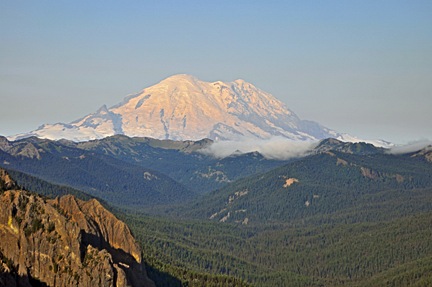And why neither got my business.
We were in Glacier National Park last weekend. It was our first visit. Glacier is an amazing place, full of granite mountains, lakes, rivers, and waterfalls. It’s the kind of place that’s perfect to explore by helicopter.
There are two helicopter operators in West Glacier, right outside the park. Here’s our experience with them.
Mom-and-Pop
The first one you come to as you’re driving in from the west is the “mom and pop” operation my friend, Jim, had recommended. Jim operates Big Country Helicopters in Coeur d’Alene, ID and had worked with this particular operator to give one of his clients a helicopter flight over the park. This operator has just one helicopter, a Bell Jet Ranger, which seats 4 passengers. It’s the perfect size helicopter for the location — two couples or a family of four can fly together but it’s likely to be cost-effective enough to take just two passengers. I assumed that like most smaller tour operators, this operator was more likely to offer a personalized tour experience.
Unfortunately, when we stopped in to the office for this operator at about 5:10 PM on a Saturday afternoon, the office was closed. There was no sign on the door with hours or a phone number. There were no brochures to take away. There was nothing. It was as if they weren’t interested in doing any business. Oddly, there were two vehicles and the helicopter parked at the property. But no one was around to help us or even tell us where we might be able to get help.
As they say in Twitterland: #FAIL.
The Big Operator
The other operator in West Glacier flies Bell Long Rangers — the same helicopter I flew at the Grand Canyon back in 2004. These helicopters seat six passengers, but two face backwards. I’ve sat in one of those backwards-facing seats and I can tell you that it sucks. This operator had three helicopters, one of which was parked right alongside the road on a little hill — kind of like a car dealer might show off a car or truck to passersby. There was some activity by one of the helicopters; some park employees in uniform and a pilot in a flight suit scurrying around like they were prepping for a flight. No tourists around, though.
A sign on the door said they were open from 8 AM to 8 PM. We went inside. A woman greeted us before we could get to the counter. The conversation went something like this:
Woman: “Can I help you?”
Me: “We’re interested in a helicopter flight.”
Woman: “Well, we’re done for today. Do you want to book something for tomorrow?”
Me: “Well, can you tell us about the flights? Where do they go?”
Woman: “There’s a half hour flight for $110 per person and a one-hour flight for $220 per person. There’s another couple going out on a 9 AM flight tomorrow. I can book you on that.”
Me: “We’re leaving tomorrow morning. We’ll think about it.”
I didn’t have much to think about. The woman had lost my business by making three mistakes:
- If your sign says you’re open until 8 PM, don’t tell potential customers that you’re “done for the day” at 5:15 PM.
- If your customer asks a question, answer it. Don’t answer questions that aren’t asked until after you’ve answered the one that was. I didn’t ask how long the flights were or what they cost. I asked where they went. I expected to see some kind of map of the park with a flight route.
- Ask your customers what time is convenient for them. Don’t try to put them into a time slot that’s convenient for you.
Her attitude was so typical of the big helicopter operators. They can save it for the tourists who don’t know better. I worked for an operation like that and I won’t subject myself to their type of “service.”
No Helicopter Tour of Glacier National Park
So we didn’t get to see Glacier from the air. That doesn’t mean I won’t. I’ll be checking into the rules and regulations for flying over the park. Maybe next year, on our way to Washington, we’ll take a northern route.



